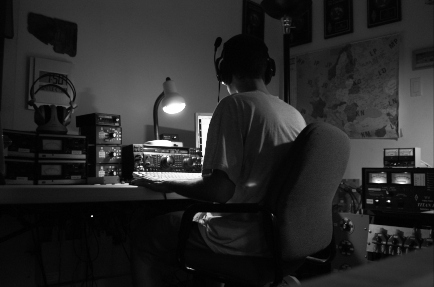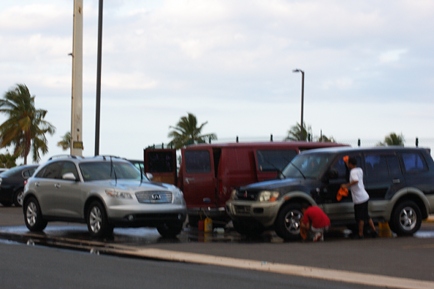
PJ2/K8GU
So, those of you with whom I’ve spoken at length recently know this story and it’s a few months late. But, I found it on my computer tonight, even though I wrote it on the plane from CUR to MIA.
One of my first exciting memories of ham radio is sitting in the corner of my parents’ living room with a HeathKit SB-303 receiver borrowed from a family friend, Doran, N8ZYJ (SK, who was, coincidentally, the father of Dave, W9GR), listening to DX on 20 meter SSB. The first DX station I clearly remember hearing was PJ9JT and he had a tremendous signal. Fast forward fifteen years later: through my graduate research and the generosity of Geoff, W0CG/PJ2DX, I recently had the good fortune to spend a few hours at the latest incarnation of PJ9JT, the world-renowned PJ2T.
On the way from the airport, Geoff gives me the synopsis of the PJ9JT/PJ2T story: W1BIH visited Curacao and operated from a hotel on the northwest part of the island. The experience blew him away. He came back with some friends and they won a couple of contests with wires and a small tribander. Convinced that there was something special about the location, he built two houses right next to the hotel and set up PJ9JT in one of them. Geoff agrees that the place is special, to which I reply, “It’s the equatorial [ionization] anomaly.” “Exactly,” he says. Curacao is on the poleward edge of the northern crest of the anamolies, which are enhancements in electron density north and south of the geomagnetic equator.
Geoff adds, “We believe that more QSOs have been from the Signal Point QTH than any other single QTH in the world. This has certainly been the case over the past few years in which PJ2T has been the most-worked callsign in contesting.”
It’s easy to understand why. Geoff offers to let me play radio. “Well, if you don’t have anything else for me to do, sure.” He tells me it’s really important for shakedown since a group of guys is coming for WPX tomorrow—as
if I really need convincing. “Believe it or not, ” he tells me, “there are some hams who don’t want to operate the station when they visit.” What’s wrong with them?! I’m not the most proficient pile-up operator in the world; but, it was a good time. In about three and a half hours goofing around on 20, 40, and 80 meters CW, I added around 400 QSOs to that grand total…and, I don’t even know what I’m doing!
One of the great things about running a pile-up from the other end is understanding what makes callers easier to copy. The pile-up is a rumble of callers and you’re lucky to pull a few characters out of a call unless someone is loud or some of the other callers stop. Even a very weak off-frequency station bursts right through the other callers simply becuase (s)he is in the clear. After a while in my first stint of operating, Geoff passed me a note that he had a phone sked with W9JUV and K8ND in 10 minutes. I appreciated the relief from the cacophony of weak JAs. I had a nice chat with John and Jeff (sort of a fascinating story here; but, I’ll save that for later) after Geoff got up.
Later, I ask about the pile-ups. “Is it always like this, even during non-contest periods?” “Yes, ” he says, “you are so loud that they just call you. Back closer to solar max, we ran a multi-multi here and made 1000 QSOs the first hour. It’s unreal. The novelty of daily pileups wears off after a while. These days, I get a bigger kick out of keeping the station running.” Someone has to, that’s for sure. For it’s size, the station is a study in simplicity. Most of the coax routing is done with standard mechanical coax switches. There are only three (three more than Geoff would like, he tells me) rotators. But, with the salt air, corrosion is a continual problem.
Goose, W8AV, has been prodding me to join them for ARRL DX CW sometime. I’m definitely sold on it. It’s just a matter of time, permission, money, and AAdvantage miles now. Geoff said as he dropped me off at the airport in the morning, “You’re coming back for a contest now, right?” Right.
A note on PJ2/K8GU QSLs: I have received a handful of direct cards and my bureau sorter K8MFO always reminds me I’ll probably have a QSL rate of near 90%. I do plan to print cards this summer. But, I have to design them and buy them, yet. Thanks for your patience as I try to finish my degree and move! The first few cards will also receive a custom laser-engraved poker chip that I gave-out as favors during the work portion of this trip.

